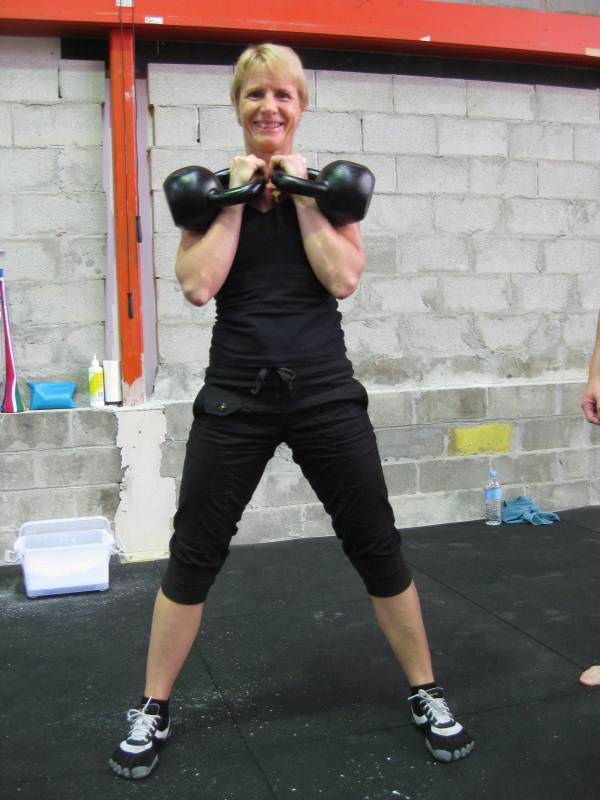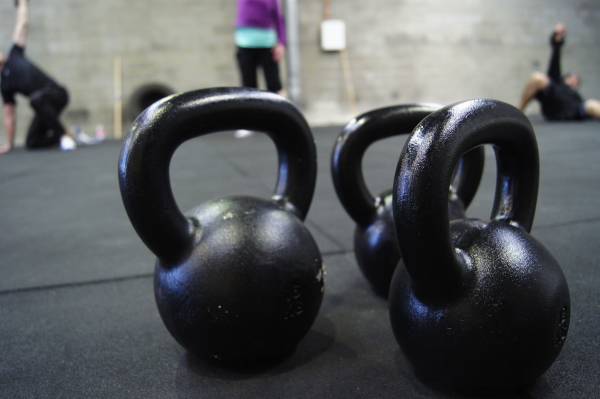What’s not to love about the power clean? It’s a great all around strength and power exercise. It hits the posterior chain, teaches intramuscular coordination, and helps speed and power production.
What’s not to love about the power clean? It’s a great all around strength and power exercise. It hits the posterior chain, teaches intramuscular coordination, and helps speed and power production.
But the learning curve is just too steep. Skill in the Olympic lifts, like with skill in all sports, can take years to gain. Sometimes you don’t have years to work with an athlete to help them reach their peak. Sometimes you get, if you’re lucky, a few weeks. Other times you get just a session or two before they head off to compete or go back home to train on their own.
So what we need is an exercise that teaches the same thing, but has an almost zero learning curve. I hate to always reiterate about the RKC system because I’m worried I sound like a broken record, but the six exercises in the RKC are as full body as you can get.
The swing is a deadlift and we all know they’re good for you. The get up is clearly a full body exercise, and more on this in a second. The squat is obvious and if we replace the other three exercises – snatch, press, and clean – with a bar there’s no self-respecting strength junkie who wouldn’t tell you how great those three are.
Yet the kettlebell clean gets paid little attention
The first time I heard the expression “steering strength” was from Stuart McGill and he was speaking about the get up and how both halves of the body are forced to learn to work together, linked through a stiff midsection, while a weight is steered through a variety of angles. This is a useful skill for grapplers, extreme athletes such as motocross riders, and even people moving house.
But the get up is slow, methodical, and not at all like most athletic events. We need an exercise that teaches us to steer force quickly. The swing is great as a horizontal expression of force, much like a punch or kick, but we need to be able to drive our force in other directions, too.

Let’s just examine the clean in detail for a second. The weight needs to move from either the floor or above the floor (when you start from “the hang”) to a position at our chests (known as “the rack”). This rack position is the basis for us to front squat, press, or jerk so having a solid clean sets us up as well as possible to have a solid starting point for these other moves.
I believe the kettlebell clean is a better choice to teach someone in a hurry for one simple reason – since we can focus on one hand, instead of the hands being locked together on a bar, we essentially halve the amount of coordination needed to learn the move. That extra brain space can be used to make sure everything else is in place.
The kettlebell clean is a deceptive exercise. That’s because it’s not like a barbell clean at all, rather it’s a swing in disguise. In fact, the RKC standard for the clean clearly states, as point number one, that, “all of the points that apply to the swing, minus the straight arm position at the top of the rep are required”.
In other words, the swing is a clean that is steered into a different place. A dynamic expression of this same steering strength concept that McGill was speaking of.
Not only is this ability to dynamically steer force important athletically, but the other benefits of the clean are still there – posterior chain recruitment, speed, and power. And with the addition of the extra plane of movement that the bell provides you get large doses of coordination thrown in, too. With the single kettlebell clean you are also forced to work hard to resist all the rotational forces on your body that a heavy bell will challenge you with. A heavy clean is as useful for improving core stability as a heavy get up (and if you look at the first half of the get up you will see the bell goes from rack to full extension and then a hinge at the hips – almost the same movement, but rotated ninety degrees).
The kettlebell clean has some other advantages, too. Dan John is a fan of the deadlift for collision sports. I’m a bigger fan of the kettlebell clean. When a heavy bell hits you for the first time and almost knocks you off your feet you’ll understand why. The clean is a shrugged off tackle or takedown. It’s a blocked roundhouse to the body (and it’s rack position is almost exactly like your guard in stand up fighting).

If you’re a taller guy like me, and, let’s just say, not the most flexible guy in the world, working off the floor with a barbell clean may not be great for you. Many big name strength coaches will get their athletes to work from the hang position, either from mid-thigh or the knees. The kettlebell clean has a bottom position that is the same as a hang clean from the knees. This provides less stress to the back yet keeps all the other benefits of the clean. The hang position has some other benefits for upper body dominant athletes like wrestlers or throwers, as well – while the posterior chain is still used heavily, the lift becomes more upper body dominant and forces the athlete to be even faster to drive the bar from start to the rack.
I’m not about to say that learning the clean of any variety is easy, but a single kettlebell clean will take significantly less time than a barbell power clean. It’s as easy as ordering a copy of Enter the Kettlebell off Dragon Door and getting started. As long as you’ve got a safe understanding of the swing, you will be able to clean and reap all the benefits of this powerful exercise, too.
My favourite way to work the single clean is easy – 5 x 5 with a heavy bell. Most RKC men should be looking to use at least a 40kg bell and most ladies at least a 20kg bell. Try it for a few months and see how strong you get in all your other exercises as a result. An extra bonus is that when you go back to your normal press weights that they will feel light and easy to steer into the rack.






